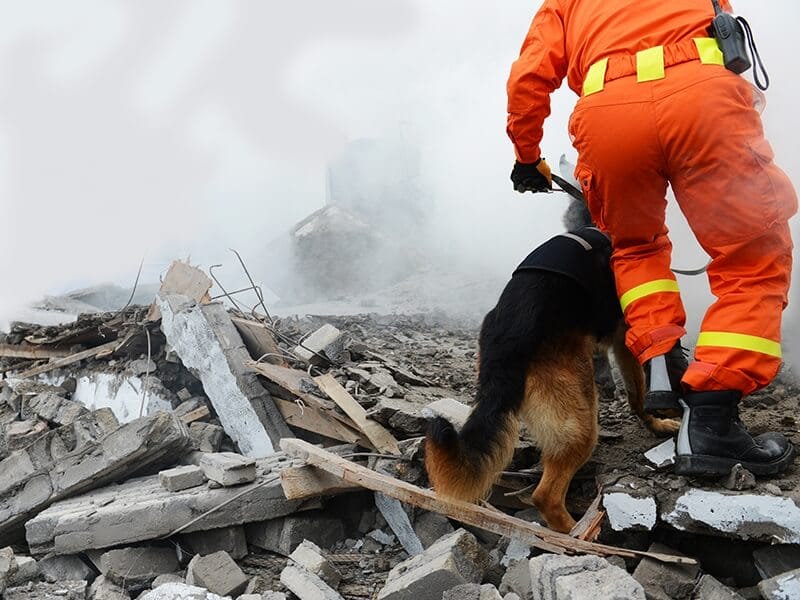
Detection Tools For Arson Or Fire Investigation
Many accelerants are hydrocarbon-based fuels such as gasoline (petroleum)
Fire investigation, sometimes referred to as origin and cause investigation, is the analysis of fire-related incidents. After firefighters extinguish a fire, an investigation is launched to determine the origin and cause of the fire or explosion. Investigations of such incidents require a systematic approach and knowledge of basic fire science.
Measurement Instrumentation For Fire/Arson Investigators
Fire investigation, sometimes referred to as orgin and cause investigation, is the analysis of fire-related incidents.
The principal goal for fire investigators is figuring out how and where a fire started and where foul play is suspected, specially trained arson detection dogs are amongst their ‘tools of the trade’. It is common knowledge that dogs have a keen sense of smell, but the actual degree of sensitivity is amazing.
Smell is a dog’s primary sense, and it is 10,000 to 100,000 times more acute than humans. That analogous to being able to see and recognise something 500 meters away, a dog could see and recognise the same object 5000 kilometres away. Or, if you could taste a teaspoon of sugar in your coffee, a dog could taste a teaspoon of sugar in over 3.5 million litres of water.
In terms of detecting the residue of volatile organic compounds (VOC) that may be present at a fire scene from common accelerants such as solvents, gasoline (petrol) or diesel fuel, they have a sensitivity of 0.001 part per million (ppm).
”Modern PID sensors are able to ‘compete’ with arson investigation dogs in terms of sensitivity and offer a number of advantages. They are portable and easy to use in the complex aftermath of a fire and can run for many hours, where dogs may otherwise tire or become desensitised. PIDs will increase the productivity of the fire investigator and reduce the number of samples that need to be sent to the lab for analysis. The subsequent cost savings make for an excellent return on investment. PIDs are simple to use and give a continuous read-out for rapid location of residual accelerants at a fire scene.
Detection Tools For Arson Or Fire Investigation
Another proven scientific tool used in forensic fire investigations is the photoionisation detector (PID):-
- PIDs are quick, simple to use and accurate for the detection of fire accelerants
- PIDs are very sensitive to commonly found accelerants and will detect hundreds of gasses and vapours in low concentration
- PIDs are non-destructive and will not affect the air sample which can be captured at the same time as the measurement for further lab analysis
- PIDs reduce the quantity and cost of lab samples required to reach a conclusion as to the cause of the fire
- PIDs are portable and battery powered making them ideal fire and arson investigation instruments
Choosing The Right Instrument
Manufacturers tend to offer variants of the same instrument differentiated by functionality and/or performance to suit different budgets but here are some important considerations:-
- Battery life – look for at least a 24-hour run time
- Battery type – look for rechargeable but is there a ‘dry cell’ backup in case of emergency?
- Sensitivity – look for a minimum 0.1 ppm (100 ppb) but ideally 1 ppb, equivalent to that of a sniffer dog
- Fast response and clear down time – this should be around 2 seconds
- Upper range – 20,000 ppm is possible but 5000 ppm will suffice (and save money but look out for compromises that may otherwise be useful)
Download our FREE Guide
“Measurement Instrumentation For Fire/Arson Investigators”
The measurement instrumentation for fire/arson investigators guide provides the reader with an in-depth balance of knowledge on the benefits and comparison of trained sniffer dogs and photoionisation detectors for the use within fire/arson investigations. We also explain the the effects of high humidity and how the PID design can withstand the harsh heat along with which instrument is best suited for your application.
















 United Kingdom
United Kingdom






